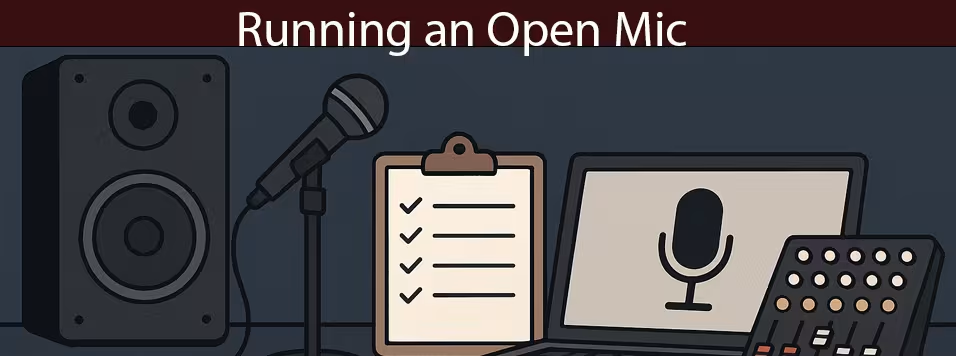
Tips for Running Your Own Open Mic Night
Open mic nights are a great way to bring your community together, showcase local talent, and build a loyal audience for your venue or event space. Whether you’re a musician, venue owner, or simply someone passionate about the arts, hosting an open mic can be rewarding — but it does take planning and organization. Here are some key tips to help you run a successful open mic.
1. Get the Right Equipment
You don’t need a full concert setup, but you should have reliable gear that covers the basics:
- Microphones & Stands: At least 2–3 dynamic microphones (like Shure SM58s) and sturdy stands. This allows for solo acts, duets, or group performers.
- PA System: A quality PA with speakers that fit the size of your room. For small venues, powered speakers may be enough.
- Mixer: A small mixing board (6–12 channels) to balance sound levels between vocals and instruments.
- Cables: Always keep extra XLR and instrument cables on hand. They wear out faster than you think.
- DI Boxes: Useful for plugging in acoustic guitars, keyboards, or other instruments directly into the mixer.
- Monitors: A stage monitor (or two) helps performers hear themselves.
- Lighting: Even simple stage lighting can make performers feel more comfortable and the audience more engaged.
Pro tip: Test all equipment before the event starts, and keep a “quick fix” kit handy with spare strings, picks, drumsticks, and gaffer tape.
2. Organize and Manage the Night
The key to a smooth open mic is good structure. Performers and audience alike appreciate a well-run event.
- Sign-Up System: Decide whether you’ll use a first-come-first-serve sign-up sheet at the venue, an online sign-up in advance, or a mix of both.
- Time Slots: Stick to a time limit (e.g., 10–15 minutes or 2–3 songs per performer). This ensures everyone gets a fair chance.
- Host/Emcee: Have a friendly, engaging host to welcome performers, keep things moving, and fill gaps if needed.
- Rules & Guidelines: Be clear about what’s allowed (e.g., family-friendly content, original music vs. covers). Post rules where performers can see them.
- Support the Performers: Encourage applause, thank each act, and foster a welcoming environment so beginners feel comfortable.
- Record or Stream: Consider recording sets or live streaming (with permission). Performers often love having footage to share.
3. Marketing and Promotion
An open mic will only thrive if people know about it — both performers and audience members.
- Social Media: Create a dedicated event page on Facebook, Instagram, or TikTok. Post regularly with photos, clips, and reminders.
- Local Listings: Submit your event to community calendars, event websites, and local newspapers.
- Posters & Flyers: Old school still works. Hang them in coffee shops, record stores, libraries, and other creative hubs.
- Venue Promotion: If you’re running it at a bar, café, or club, coordinate with the venue to promote through their channels as well.
- Networking: Connect with local musicians, comedians, and poets. Word of mouth is one of the most effective ways to build a community.
- Consistency: Hold your open mic on a regular schedule (weekly or monthly) so people know when to show up.
Final Thoughts
Running a successful open mic is about more than just sound gear and scheduling — it’s about creating an inclusive, supportive atmosphere where artists and audiences feel connected. With the right equipment, good organization, and consistent promotion, you can build a vibrant community event that grows week after week.
- Log in to post comments